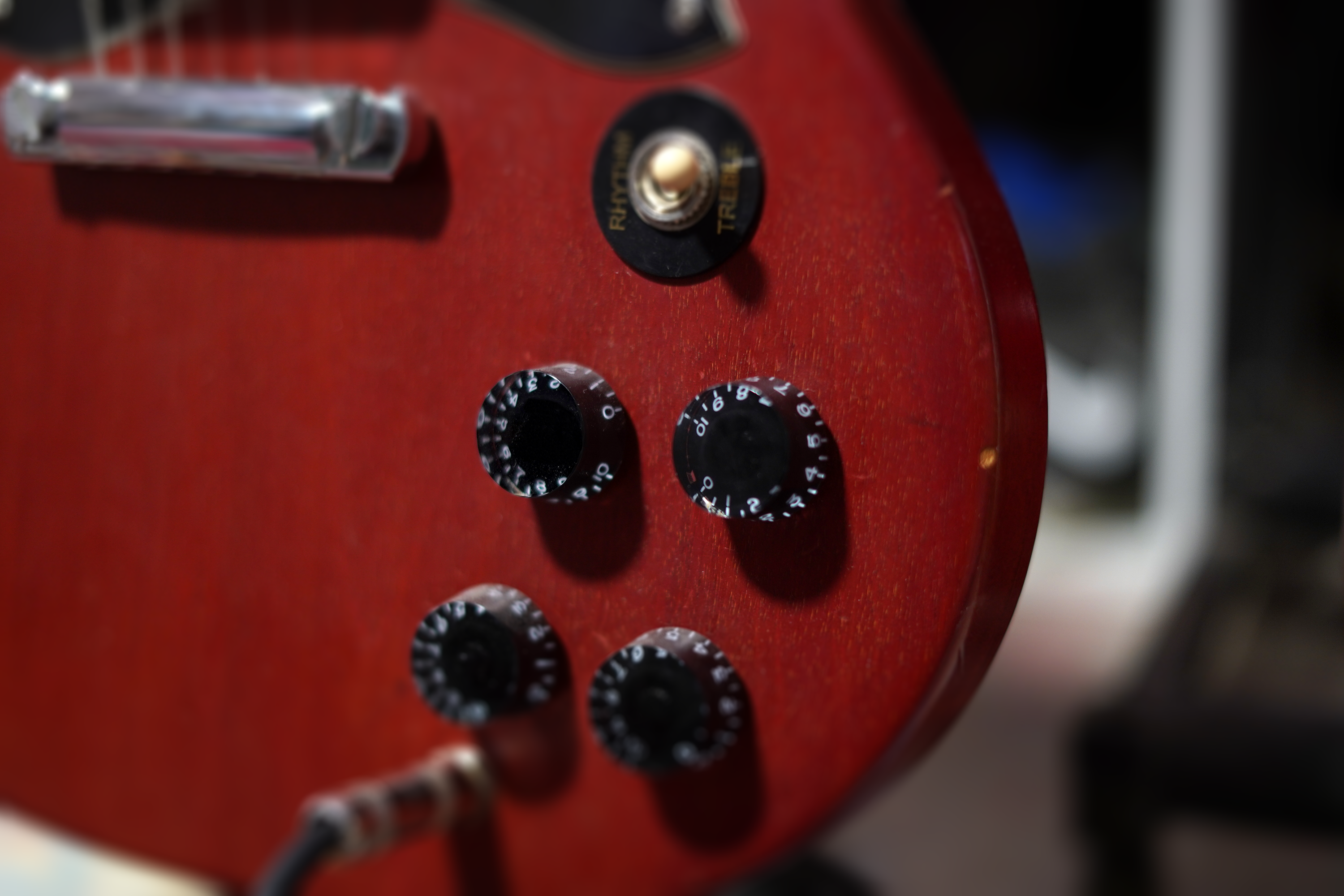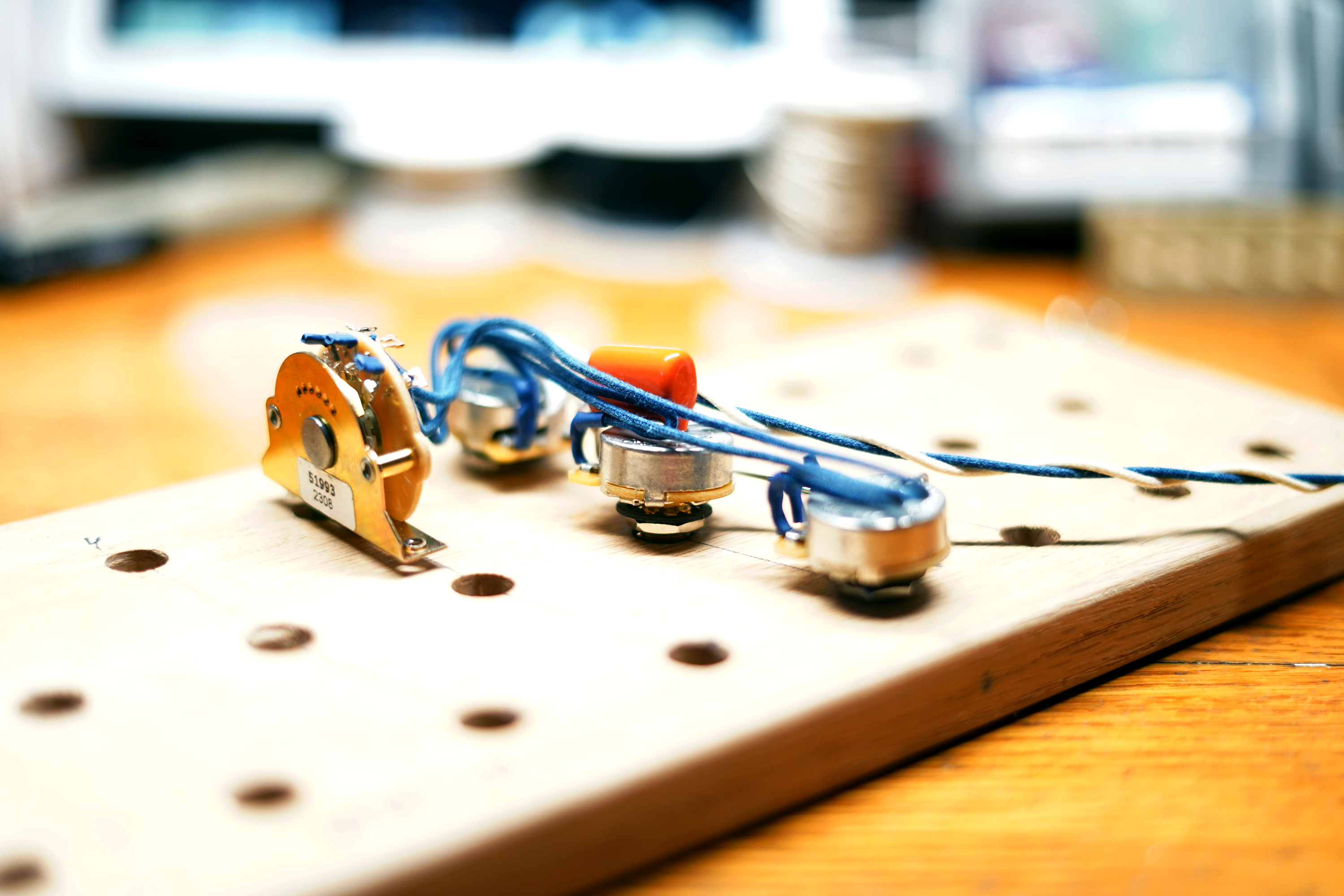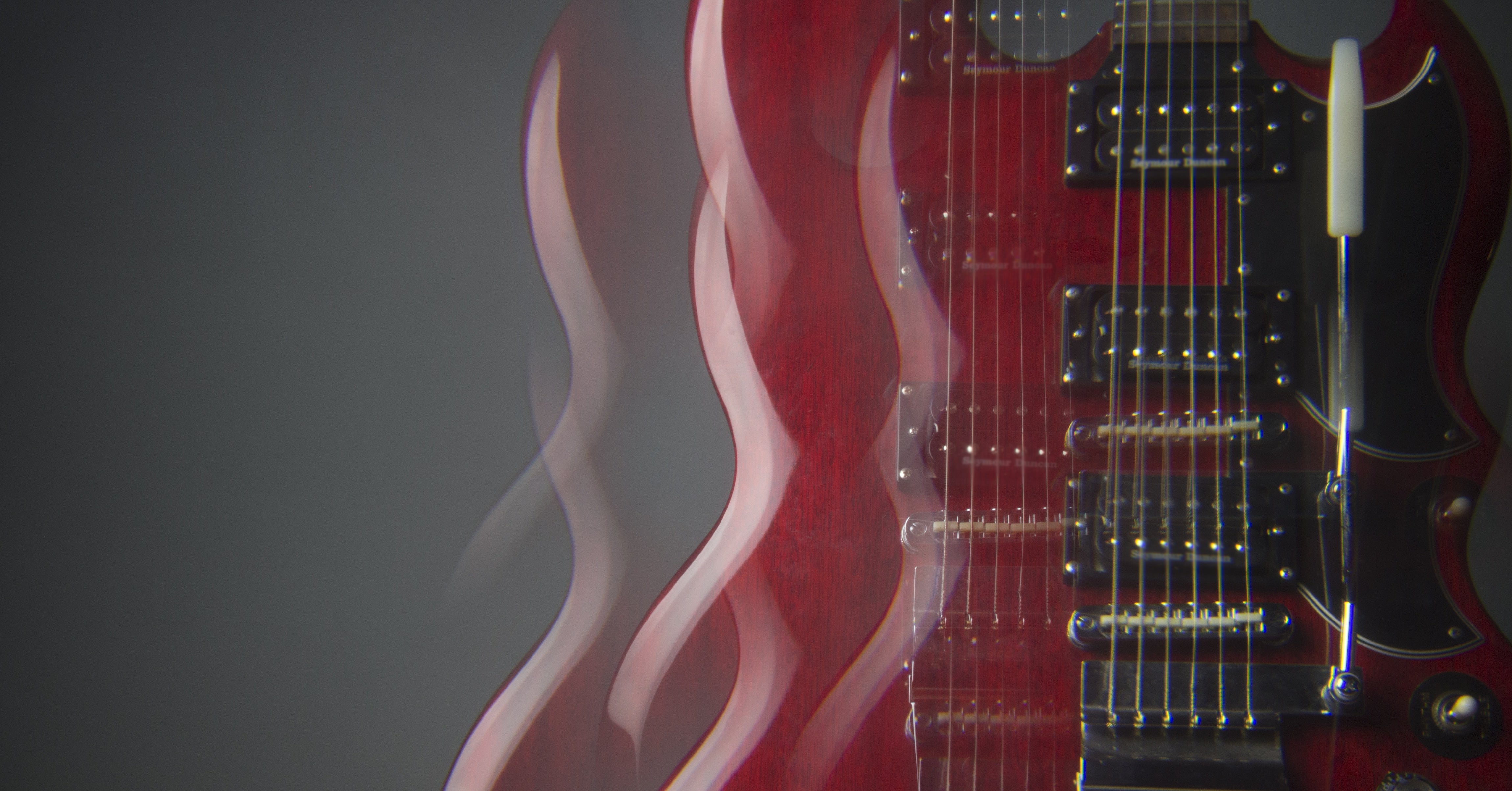
How a Volume actually works in your guitar
Before we start. Do you like posts like these? Do us a favor. Share this post with your fellow circuit nerds and sign up for our mailing list found at the bottom of this page!
I was recently talking to a local guitar tech at a busy store, and as most conversations with me go, led to talking about wiring. He was asking me about this weird “jumping” volume in his customers brand new guitar. It was normal from 10 to 4, max volume at 3, and normal at 2-1.
I had guesses but without seeing the pot firsthand, I couldn’t exactly answer beyond explaining how a volume pot actually works. I left with them telling me how they always love when i stopped by as they are always learning something new.
On my drive home. I thought to myself how many aspiring techs know how a volume actually works, or if they want to know, have access to information that explains it in the simplest way possible.

Now I’m going to try and explain this in super simple terms as surprisingly this can get fairly “nerdy” as there is a defined mathematical formula. But your standard volume is what they call a “Voltage Divider architecture.”
Basically it takes the output of the pickups and through the circuit design reduces the output. Simple right? But the reduction is solely based on the value ratio in this architecture.
Below is a simple diagram using Resistors as a reference. To Overly simplify what's happening "Value A" acts like a Passthrough limiting filter, while "Value B" filters the signal by sending a set amount to Ground.

Alright now that you understand how the circuit itself works, we have to take a step back and explain Potentiometers.

Simply put, a potentiometer is an exposed resistor (1 through 3) that has an adjustable wiper in the middle, (2) allowing you to adjust the value either in the form of a single resistor, or in 2 resistors in series, as everything before the wiper is one resistor, and everything after is another. See where we are going with this?

How the Voltage Divider works with a potentiometer.

Lets say we have a humbucker output we are sending through a 500k pot.
- Max volume: The wiper is touching the Pickup making Value A be 0-K, and Value B be 500k.
- We want to drop the volume in half: So, we move the volume knob to 5 aka the wiper halfway. Now Value A is 250k and Value B is 250k
- Lets say we want to go 3/4th of the way down Value A. 375k and Value B is 125k
- No volume: The Wiper is touching the Ground making it short out aka no signal.
Now that was a Super simple explanation. In the real world it's a little more complex.

For the example above we were using a Linear pot. But we often use Audio pots for volumes.
Basically, the difference between Linear and Audio is how that value ratio progresses as you use the control. Linear has a consistent decreasing ratio where 9 is 90%, 8 is 80%, etc. Audio pots are designed to make a ratio that mimics how our ears hear a sound changing.
So using a hypothetical audio taper in a volume, the overall output from 10 to 7 only decreases the volume to 90% output, from 7-4 it drops from 90% to 60%, 3 is 50%, and by 1 its 5%. Sounds weird. But its how our ears hear a drop in volume.
Now before we finish with this volume architecture, we should probably explain there's no rules for using Audio or Linear, it tends to be the preference of the designer. That's why looking at a wide range of brands, you will see a ton of different opinions. Brands, like Fender, or Epiphone like to use Linear, where some like Gibson prefers Audio. My experience over the last few decades is a larger percentage of people prefer Audio.
Independent Volumes
Now there is a slight issue with the standard volume circuit. When you have more then 2 in a circuit and turn down the volume on one of them, you will find that it cuts the signal of both pickups. This is because the output is touching the ground. But you can use a different circuit with pots to make it Independent.
All we are doing is swapping the input and output. Basically, we wire the Pickup to the Wiper and the Output becomes the first lug.


With this layout the signal output will never touch "ground" as when the pickup input is touching the ground lug it is just changing the 2 resistors into a single 500k [Value A] resistor.
The only other thing to take in consideration with this circuit is the architecture is different from the standard volume so your audible taper will change as well.



3 comments
It’s a super common myth/misunderstanding that using a slightly higher value (550k over 500k, or 275k over 250k) will give you “better highs” but in a passive circuit like what’s in your guitar. It’s more of a placebo effect. Basically, that’s too small of a passive variance to make a difference. But if you notice a “Huge difference” it’s most likely because you changed say a linear pot for an audio or vice versa. Most of the misunderstanding comes from it technically being true in certain active circuit architectures.
Sean @Gunstreet
Are there slight differences in potentiometer values? Would a pot with a value of 550 k deliver more highs?
Bill
Good info..I can use this thank you
Terry Guidry
Leave a comment
This site is protected by reCAPTCHA and the Google Privacy Policy and Terms of Service apply.